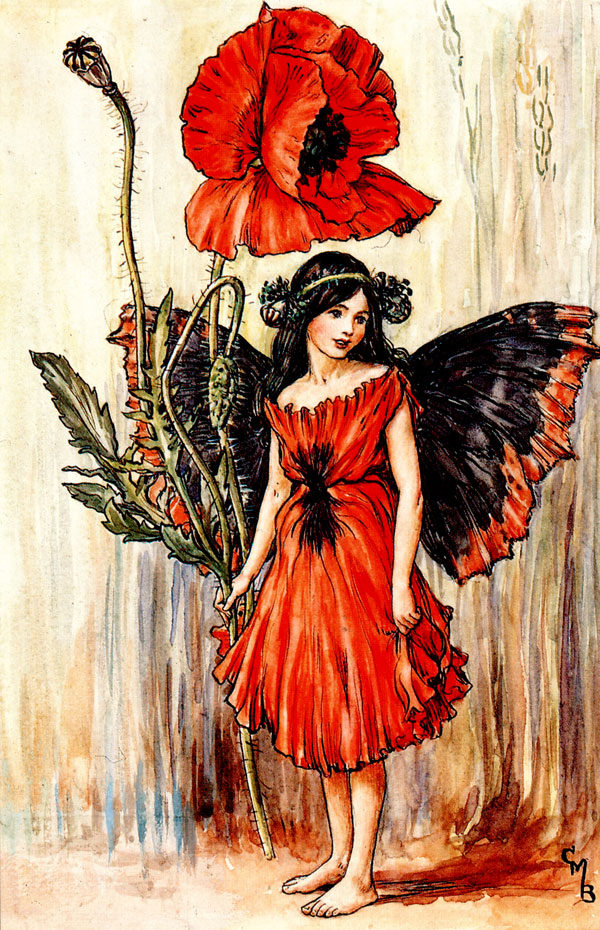Tolkien, a Poppy and the Death of Traditional Fairies October 24, 2013
Author: Beach Combing | in : Contemporary , trackbackTolkien has rarely featured in these pages, but given Beach’s interest in fairies, it was only a matter of time before the Oxford don had a post dedicated to him. Very likely in 1913 or 1914 – the dating depends on the evidence from a fabulous article by John Garth – Tolkein had an unusual encounter with an infant.
I was walking in a garden with a small child. I was only nineteen or twenty myself. By some aberration of shyness, groping for a topic like a man in heavy boots in a strange drawing room, as we passed a tall poppy half-opened, I said like a fool: ‘Who lives in that flower?’ Sheer insincerity on my part. ‘No one,’ replied the child. ‘There are Stamens and a Pistil in there.’ He would have liked to tell me more about it, but my obvious and quite unnecessary surprise had shown too plainly that I was stupid so he did not bother and walked away.
This anecdote was used by Tolkien as a point of reflection for the role and the nature of fairies and more importantly the role and nature of children. But what is most interesting here, at least for this blogger, is that Tolkien would have conceived in 1914, say, of a fairy as an inhabitant of a flower in this way. Beach has argued previously in this place that the association between fairies and vegetation is probably a modern one and recent research suggests that it should be connected with theosophy and spiritualism, which recast fairies as elementals: something that has slight precedent in the writing of the Neo-Platonists of the Renaissance. This then fed into children literature not least through the works of the brilliant Rose Fyleman and Cicely Mary Baker.
What is fascinating is that a young Tolkien – who is often sold as a vehicle for medieval and even traditional Midland fairy lore – seems to have himself taken on or to have absorbed this Peaseblossom view of fairies. Nor was this a one off aberration. John Garth’s excellent piece on Tolkien and the poppy fairy (linked above) reveals that, at about this time, Tolkien was writing about one Tetillë, ‘a fairy who lived in a poppy’. The point to make is not about Tolkien at all, but rather about fairy culture in the 1910s generally. If even a medieval philologist in the making, with a natural reactionary streak, had accepted the myth of the flower fairies then no one was immune. No wonder the Cottingley fairies looked as they did; and no wonder traditional fairy encounters (with changelings and pixy-led walkers) had died off by 1914. The true fairies had drowned, choking in a swimming pool full of Victorian and Edwardian petals.
There are worse deaths, but not many.
Other thoughts: drbeachcombing AT yahoo DOT com
25 Oct 2013: EH writes: Apparently the young Tolkien was quite Victorian in his fairy-lore! His later detestation of such things makes more sense if they not only disinterested but actually *embarrassed* him, reminding him of youthful tastes he had repudiated. Thanks EH!



